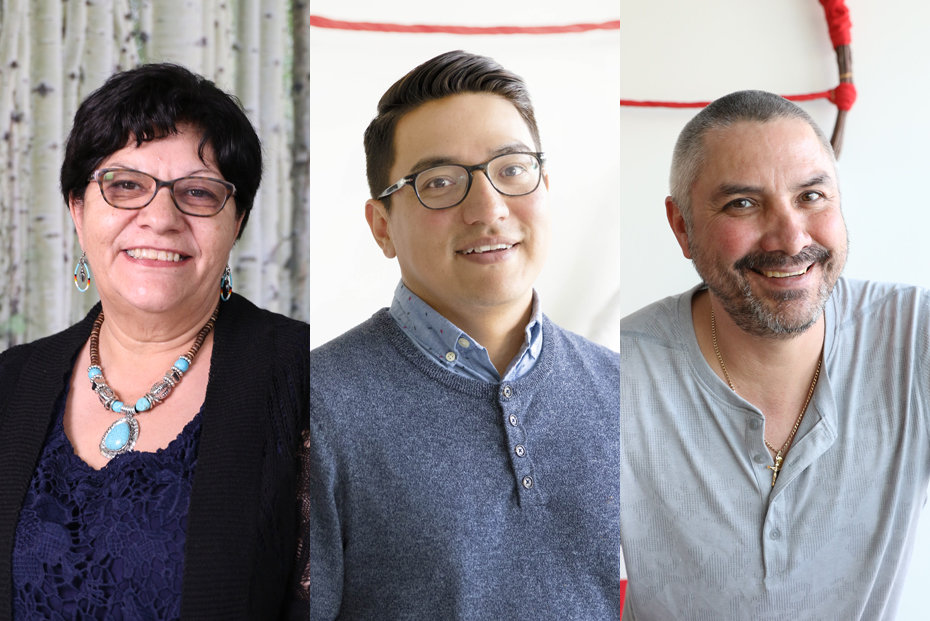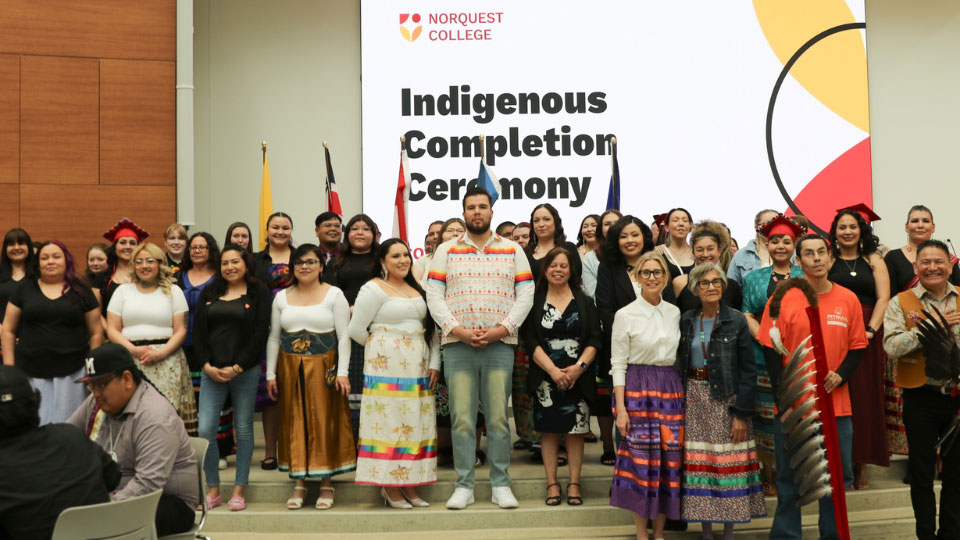Indigenous 101: Exploring myths and stereotypes (part one)
February 8, 2019

Indigenous 101 is an ongoing series of articles that explore Indigenous culture at our college and beyond. Our Indigenous team will be sharing knowledge as we delve into ideas, concepts, myths, stereotypes, and more.
Beware of false knowledge; it is more dangerous than ignorance.
Myth: Indigenous people have it easy! They don’t have to pay any taxes.
Delores: That is a myth! (chuckles) The only time we don’t pay taxes is when we are on our reserves. And you have to have proof – you need your status card and your tax-exempt card when you are purchasing certain items. But outside of our reserves, we pay taxes on everything like everyone else.
Thomas: I worked in the trades for years, and when I worked for Syncrude I got taxed, but when I worked for CNRL, I didn’t because it’s on Treaty land. But you have to show your status card, and you have to fill out an application when you start working there.
Elliott: When you dive into what “tax free” looks like, it’s quite intricate, since it works differently at provincial and federal levels. Our tax-exempt cards are called “Indian Tax-Exempt Card” and issued by the Alberta Ministry of Treasury Board and Finance. With those cards, we don’t pay taxes on gas or tobacco. With my job at NorQuest, I work off reserve. But if a majority of my time was spent working on reserve with community outreach, we can enter that into our T-4s at tax time, and then a portion of our income will be tax-free.
Question: Over the years, the way that we address Indigenous people has changed. First it was “Indian”. Later on, it was “First Nations”. Currently, it’s “Indigenous peoples”. Why has this changed over time?
Delores: Those terms are changed by the federal government. For a time, we were called “Aboriginal people” and I didn’t use that word; I didn’t like it. I always used “First Nations” and I still do.
Thomas: Well, Indian… I’ve been called a lot worse when I was younger! Indigenous sounds so much better. Our culture is so beautiful, and when you hear the word Indigenous, you think of culture. When you hear Indian, you think of some old western movie with John Wayne.
Delores: Older generations still say things like “us Indians”. Even my husband will say that! Because that is the word that was handed down to them by western society, it’s a colonization mindset. That’s what they called us, "dirty Indians". So that’s why I don’t like that term. But older people still say it with no shame.
Elliott: The terminology really depends on the individual you’re working with. I feel that it’s about relationship-building. For instance, I can fit into those categories – Aboriginal, Indigenous, Indian – but if you ask me who I am, I would say Cree or Nehiyaw. And then all those other terms fall underneath that. So when you talk to Indigenous people, ask them what they prefer, because you’ll get a different answer from different people. The terminology – especially Indian and Aboriginal – is politically correct, in the strictest sense of the term, since it’s in legislation. In the Constitution Act, it states that Indigenous people are defined as First Nations, Métis, and Inuit. But if you dive further, the word Indian is still referenced because of the Indian Act. So Indian is still referenced in legal documents, and any formal agreement with governments. Indigenous is a term that now has a global acceptance thanks to the United Nations’ Declaration of Rights for Indigenous People. In fact, it was someone from Alberta who played a key role in developing that UN declaration, Chief Wilton Littlechild.
Myth: Indigenous people are lucky when they go to the dentist, because they can get their teeth fixed for free.
Thomas: I wish!
Delores: It’s mostly a myth. Simple things like a cleaning or a cavity are covered.
Elliott: Any kind of dental or health benefits is really tricky with the federal government. It falls under something called First Nations Health Benefits. The federal government has a fiduciary responsibility from the Indian Act and treaties to provide certain, basic health services to Indigenous people. What that has evolved into is very minimal, bottom-line services with lots of red tape. It can be very frustrating, since the federal government will often try to find loop holes around their fiduciary responsibility. It’s such a complex system that many people just stay away from it.
Stereotype: Many Indigenous people are poor and on welfare so they aren’t motivated to find jobs.
Delores: It’s certainly a mistake. There are so many of our people who are educated and successful – lawyers, doctors, nurses, teachers, social workers – but we’re all put into one category because of colonization. And we shouldn’t have to shout “hey, look at me, I’m Indigenous and I’m successful!” Wilton Littlechild once said that it’s going to take another 100 years before mainstream society knows who we are and for Indigenous people to heal from being colonized.
Thomas: When it comes to poverty, it’s not only Indigenous people. There are some people who just don’t want any part of society, because society has rejected them. That’s just the lifestyle they want to live. I’m here at NorQuest to better myself. I’m Indigenous, and I’m receiving income support. But that doesn’t mean I’m not motivated!
Elliott: That stereotype isn’t easy to address, since there is definitely an over-representation of Indigenous people when it comes to poverty and homelessness, but there is a specific reason for that. Colonization and the inter-generational trauma of Residential Schools has put a lot of Indigenous people in a situation where they are dealing with obstacles and barriers that the majority of society isn’t. As Thomas says, mainstream society has been pushing against Indigenous people for a very long time, so the rejection goes both ways. And Indigenous people are also over-represented in the justice system, the youth justice system, and child welfare. If you think of 100 years or more of colonization and assimilation policies, we can’t expect the situation to get better overnight. But it’s getting better. NorQuest College is a great example – we’re looking at innovative ways to meet the needs of Indigenous peoples, like the Alberta Indigenous Construction Career Centre. So there are examples of how things are changing for the better, but it’s going to take time.


